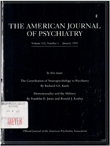The concept of boundaries in clinical practice: theoretical and risk- management dimensions
Abstract
The authors systematically examine the concept of boundaries and boundary violations in clinical practice, particularly as they relate to recent sexual misconduct litigation. They selectively review the literature on the subject and identify critical areas that require explication in terms of harmful versus nonharmful boundary issues short of sexual misconduct. These areas include role; time; place and space; money; gifts, services, and related matters; clothing; language; self- disclosure and related matters; and physical contact. While broad guidelines are helpful, the specific impact of a particular boundary crossing can only be assessed by careful attention to the clinical context. Heightened awareness of the concepts of boundaries, boundary crossings, and boundary violations will both improve patient care and contribute to effective risk management.
Access content
To read the fulltext, please use one of the options below to sign in or purchase access.- Personal login
- Institutional Login
- Sign in via OpenAthens
- Register for access
-
Please login/register if you wish to pair your device and check access availability.
Not a subscriber?
PsychiatryOnline subscription options offer access to the DSM-5 library, books, journals, CME, and patient resources. This all-in-one virtual library provides psychiatrists and mental health professionals with key resources for diagnosis, treatment, research, and professional development.
Need more help? PsychiatryOnline Customer Service may be reached by emailing [email protected] or by calling 800-368-5777 (in the U.S.) or 703-907-7322 (outside the U.S.).



